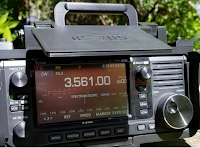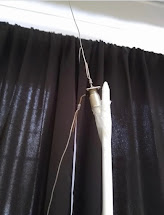Are you tired of mediocre antenna performance and want to build your own custom antenna to maximize your radio communication range? Look no further than the half-wave dipole antenna. This article will guide you step by step on how to build your own half-wave dipole antenna, from selecting materials to mounting the finished product.
Table of Contents
- Introduction
- What is a Half-Wave Dipole Antenna?
- Advantages of a Half-Wave Dipole Antenna
- Materials Needed
- Calculating Length of Antenna
- Cutting and Stripping Wire
- Measuring and Marking Wire
- Attaching Feedline
- Mounting Antenna
- Testing and Adjusting Antenna
- Maintenance and Care
- Troubleshooting Common Issues
- Conclusion
- FAQs
- Other Dipole Antenna Resources
1. Introduction
Building your own half-wave dipole antenna can be a fun and rewarding project that can enhance your radio communication experience. By constructing your own antenna, you can customize it to fit your specific needs and improve your signal strength.
2. What is a Half-Wave Dipole Antenna?
A half-wave dipole antenna is a type of antenna that is widely used in radio communication due to its simplicity and effectiveness. It consists of a conductive wire that is cut to a specific length and is fed at the center with a feedline. When an electrical signal is fed into the wire, it creates a standing wave that radiates outward, creating an electromagnetic field that can be picked up by other antennas.
3. Advantages of a Half-Wave Dipole Antenna
The half-wave dipole antenna has several advantages over other types of antennas:
- Simplicity: The half-wave dipole antenna is easy to construct and requires minimal materials.
- Effectiveness: It has a higher gain than a quarter-wave vertical antenna, meaning it can transmit and receive signals over a longer distance.
- Versatility: It can be mounted in a variety of configurations, such as horizontally, vertically, or at an angle, to suit your specific needs.
4. Materials Needed
To build your own half-wave dipole antenna, you will need the following materials:
- Coaxial cable
- Insulated wire
- Wire cutters
- Wire strippers
- Soldering iron and solder
- Balun (optional)
- Mounting hardware (optional)
5. Calculating The Length of Your Antenna
The length of the wire needed for the half-wave dipole antenna is calculated using the formula:
L = (468/f)
Where L is the length of the wire in feet, and f is the frequency of the signal in megahertz. For example, if you want to build an antenna for a frequency of 146 MHz, the length of the wire needed would be:
L = (468/146) = 3.2 feet
6. Cutting and Stripping Wire
Once you have calculated the length of the wire needed, use the wire cutters to cut the wire to the appropriate length. Next, use the wire strippers to remove the insulation from both ends of the wire.
7. Measuring and Marking Wire
Using a tape measure, measure and mark the wire at the center point. This is where you will attach the feedline.
8. Attaching Feedline
Using the soldering iron, attach the feedline to the center point of the wire. Make sure the connection is secure and insulated.
9. Mounting Antenna
The half-wave dipole antenna can be mounted in a variety of configurations, depending on your specific needs and location. If you plan on mounting the antenna horizontally, you can attach it to a sturdy support structure, such as a mast or pole, using mounting brackets or clamps. If you plan on mounting the antenna vertically, you can attach it to a base plate and secure it to the ground using guy wires.
10. Testing and Adjusting Antenna
Once the antenna is mounted, it is important to test and adjust it for optimal performance. Use an antenna analyzer or SWR meter to check the standing wave ratio of the antenna. If the SWR is too high, adjust the length of the wire or the placement of the feedline until the SWR is within an acceptable range.
11. Maintenance and Care
To ensure the longevity and effectiveness of your half-wave dipole antenna, it is important to maintain and care for it properly. Check the antenna regularly for any signs of damage or wear and tear. Clean the wire and connections periodically to remove any dirt or debris that may affect its performance.
12. Troubleshooting Common Issues
If you are experiencing issues with your half-wave dipole antenna, there are a few common problems that you can troubleshoot:
- Interference: If you are experiencing interference from other sources, try relocating the antenna or adding a balun to the feedline to reduce unwanted noise.
- Weak signal strength: If you are experiencing weak signal strength, adjust the length of the wire or try mounting the antenna in a different configuration to maximize its effectiveness.
- Damage or wear and tear: If the antenna is damaged or shows signs of wear and tear, replace any damaged parts or the entire antenna to ensure optimal performance.
13. Conclusion
Building your own half-wave dipole antenna can be a rewarding project that can enhance your radio communication experience. By following these steps, you can customize your antenna to fit your specific needs and improve your signal strength. Remember to perform regular maintenance and care to ensure the longevity and effectiveness of your antenna.
14. FAQs
- Do I need any special tools to build a half-wave dipole antenna?
- No, you only need basic tools such as wire cutters, wire strippers, and a soldering iron.
- Can I mount a half-wave dipole antenna indoors?
- Yes, you can mount it indoors, but outdoor mounting will provide better signal strength and range.
- Can I use a half-wave dipole antenna for both transmitting and receiving signals?
- Yes, the half-wave dipole antenna can be used for both transmitting and receiving signals.
- Can I adjust the length of the wire to fine-tune the antenna's performance?
- Yes, adjusting the length of the wire can help fine-tune the antenna's performance and optimize its effectiveness.
- Do I need a balun for my half-wave dipole antenna?
- A balun is optional, but it can help reduce unwanted noise and interference in your signal.
- What is the recommended length for a dipole antenna for a specific frequency? [2]
- Is it necessary to trim or add to the length of the dipole wire to ensure resonance at the desired frequency? If so, what is the recommended approach for doing so? [1]
- How high should the dipole be raised to achieve optimal performance? [1]
- How is the overall physical length of the dipole calculated? [2]
- What are some factors that can impact the performance of a dipole antenna, and how can they be addressed? [2]
- Are there any specific materials or tools required for building a dipole, and where can they be obtained? [2]
- What are some common mistakes to avoid when building a dipole antenna, and how can they be prevented? [2]
KE2YK's Notes:
When building a dipole antenna, my personal advice would be to focus on getting the dimensions right. This means ensuring that the length of each element is exactly one-quarter wavelength, and that the distance between them is also precise. Additionally, it's important to use high-quality materials and connectors to ensure optimal performance.
Finally, don't be afraid to experiment with different designs and configurations to find what works best for your specific radio communication needs. With careful attention to detail and a willingness to experiment, you can build a dipole antenna that performs reliably and effectively for years to come.
Other Resources About Building A Dipole Antenna
- How To Build A Dipole Antenna https://www.radio4all.org/how-to-build-a-dipole-antenna/
- Your First Dipole Antenna https://www.hamradioschool.com/post/your-first-dipole-antenna
- Building Simple Antennas https://www.arrl.org/building-simple-antennas









